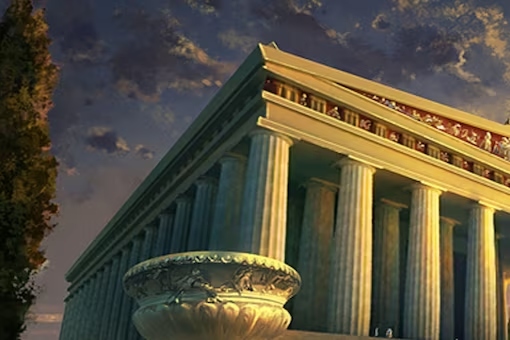Turkey boasts expansive beaches and mountains. But it is also famous its coffee and well-lit towns for thrill-seeking nature lovers. For their fair share of vacation, tourists frequently head straight to Istanbul, but numerous locations in Turkey should be on your bucket list as they make a journey an experience to remember. So if you are planning to visit Turkey on your next vacation, remember to add these religious places to your travel list:
HOUSE OF THE VIRGIN MARY, EPHESUS
Mother Mary is thought to have been laid to rest in the excavation site; following her crucifixion, she sought refuge in a little village close to Ephesus. Because the location was seen in visions by a bedridden German nun named Anne Emmerich, the entire tale has remained murky to this day.
THE TEMPLE OF ARTEMIS, EPHESUS
One of the earliest temples was the Temple of Artemis in Ephesus, which was built in 650 BC with the help of the wealthy King of Lydia. It was decided to build on marshy soil because it was thought to be a sacred location for Cybele, the Anatolian Mother Goddess. The temple was rebuilt in the fourth century, and the museum at the current location houses the sculptures and artifacts that were discovered during the excavation of the old site.
BASILICA OF SAINT JOHN, EPHESUS
The Basilica of St. John, which was constructed in the sixth century by Emperor Justinian, is thought to be located over St. John’s resting place. The basilica, which formerly had a regal appearance, is now in ruins. Despite this, the ruins have been kept in such stunning condition that they provide the visitors with a taste of the shrine’s former glory.
BEYAZIT CAMII, ISTANBUL
Beyazit Camii is one of the defining features of the Ottoman Empire after fall of Constantinople, marking the beginning of the dynasty’s regal rule. Sultan Beyazid II built the monument in 1506, using advice from his nephew, who was of Greek descent. As a result, the monument blends elements of Islamic and Greek architecture.
APHRODISIAS
The Greek Goddess of love and fertility, Aphrodite, is the source of Aphrodisias. Due to the availability of marble in its low-lying sections, the city became wealthy in the fourth and fifth centuries. There are stadiums and auditoriums in the city, just like in any other Greek settlement.


